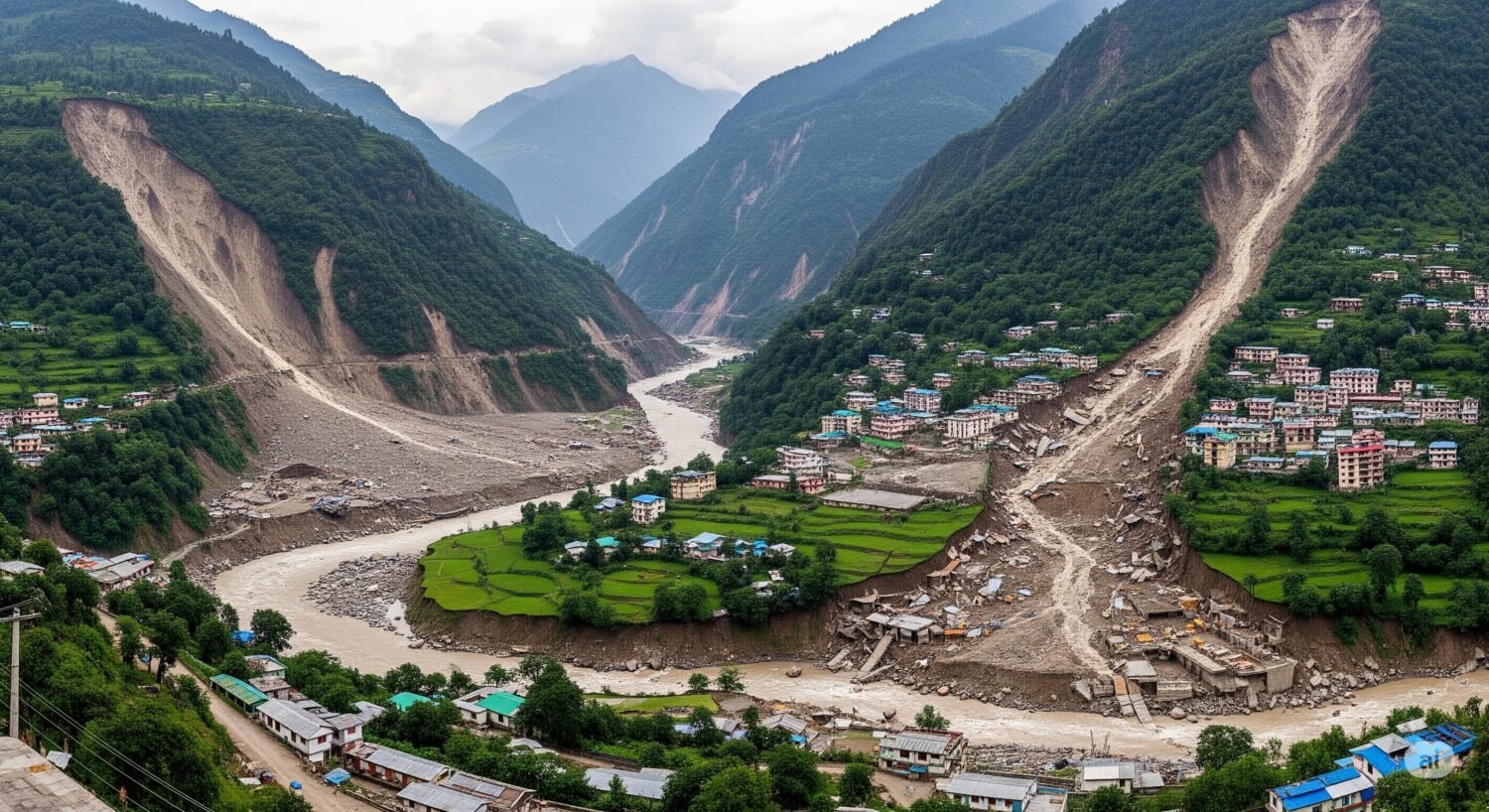

Himachal Pradesh faces a tragic crisis. Discover how warped development and ecological neglect are devastating the Himalayas and what needs to change.
A Trembling Paradise
Himachal Pradesh, often called the “Devbhoomi” or Land of Gods, is known for its breathtaking beauty and serene landscapes. However, beneath this picturesque facade, the hills are trembling. It’s not just the monsoon’s fury, but decades of ecological neglect, distorted development, and political apathy that are shaking the very foundations of this Himalayan state. The recent devastation, with its tragic loss of life and immense damage to infrastructure, is a stark reminder of a deeper crisis.
The Unlearned Lessons of “Development”
We often celebrate new highways and infrastructure as symbols of progress. Yet, in Himachal, these very projects have become corridors of calamity. Take the highway expansions, for instance. Unscientific vertical cutting of hillsides, without proper geological studies or slope stabilisation, has led to massive landslides. It’s like building a house on sand – eventually, it will crumble. Despite past disasters, the same reckless approach continues, turning vital connectivity into a source of vulnerability.
Rivers Remember: The Peril of Encroachment
Our towns and settlements are expanding, often encroaching upon natural spaces. Mandi, a town once safely nestled in a valley, witnessed devastating floods as the Beas River reclaimed its natural course. Riverbanks, once natural buffers, are now lined with homes and shops. Planning authorities have often allowed, even encouraged, this encroachment in the name of “development.” But rivers have long memories, and when they swell, the destruction is inevitable. We must respect the natural flow and boundaries of our rivers.
The Hydropower Obsession
The push for massive hydropower projects, especially since the 1990s, has further amplified Himachal’s vulnerability. Dams have mushroomed across river basins with little regard for ecological thresholds. The muck generated from these construction sites is routinely dumped into riverbeds, narrowing channels and raising their levels. When heavy rains arrive, this loose debris transforms into a lethal force, sweeping away everything in its path. This model, while promising revenue, has left behind deep ecological scars and made the state more prone to disasters, displacing communities in the process.
A Call for Accountability and Reimagination
The recent monsoon’s damages are estimated in thousands of crores, but who is truly accountable? Why were homes built on unsafe slopes? Why were geological reports ignored? There’s an urgent need for a Commission of Inquiry, ideally headed by a retired Supreme Court judge with an understanding of the region. This isn’t just about a post-mortem; it’s about reimagining a sustainable development model.
Such a commission should:
- Examine the cumulative ecological impact of all infrastructure and hydropower projects.
- Assess the failures of both central and state institutions.
- Investigate planning lapses in both urban and rural areas.
- Provide recommendations for ecologically sensitive development.
- Most importantly, engage directly with the people through public hearings and local consultations.
The Himalayas are speaking through every landslide and flooded village. It’s time we listened and co-authored a future that respects the delicate balance of nature. This is not just a bureaucratic formality; it’s a moral and political necessity for the survival of this beautiful region.
Recent Posts
A Gang’s Chilling Warning to Bollywood after the Kapil Sharma Cafe Attack
A recent incident at actor-comedian Kapil Sharma’s cafe has sent a chilling message through the… Read More
Modi and Putin’s Crucial Talk: Strengthening Ties Amid Global Tensions
Narendra Modi and Russian President Vladimir Putin recently held an important conversation, reaffirming the strong… Read More
The Bull and Bear Tussle: How Trump’s Tariffs Are Shaking Up the Indian Stock Market
Indian stock markets are on edge after new US tariffs. Will the Nifty50 and Sensex… Read More
Hope Amidst the Uttarkashi Flash Floods: Families Await News
Anxious families in Uttarkashi wait for news after flash floods. Discover the ongoing rescue efforts… Read More
India’s Unwavering Pledge: Farmers’ Interests Paramount, Says PM Modi
The nation recently witnessed a strong and clear message from Prime Minister Narendra Modi regarding… Read More
Beyond Flavor: Unveiling the Healing Powers of Indian Spices
Indian cuisine is renowned worldwide for its vibrant flavors and aromatic spices. However, these culinary… Read More